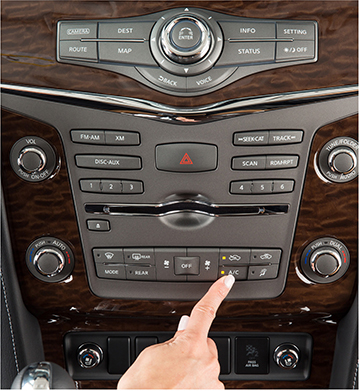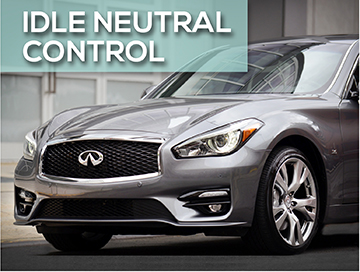
OVERVIEW
Fuel efficiency is the purpose of IDLE NEUTRAL CONTROL. This feature helps improve fuel efficiency, especially with frequent stops, such as driving in urban areas.
Vehicles that are in drive and stopped at a stop sign or red light produce a load on the engine, which burns more fuel than if the transmission were in neutral.
The IDLE NEUTRAL CONTROL feature disconnects the engine from the drivetrain under certain conditions, so the load produced by the torque converter drops, which results in reduced fuel consumption.
WHAT MODELS HAVE IT?
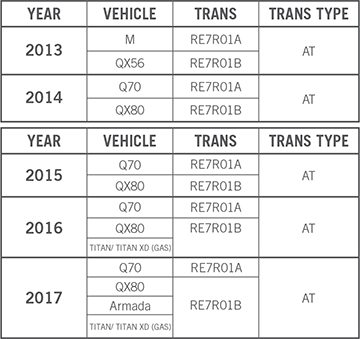

TYPICAL A/T
When the TCM anticipates that the driver does not intend to begin moving the vehicle off idle from a stopped position while in drive:
- The TCM disengages/releases the low brake.
- Disengagement is done by activating the low brake solenoid valve to reduce oil pressure to the low brake.
- Disengaging the low brake puts the transmission in the same power flow status as neutral position.
- No torque is transmitted to the output shaft.
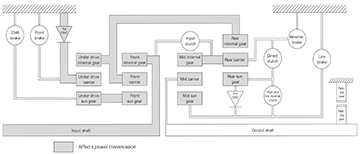
TYPICAL A/T
The following chart details the Input/Output Signals used by the Idle Neutral Control feature:
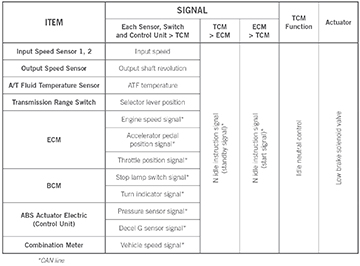
WHEN DOES IT ENGAGE?
The IDLE NEUTRAL CONTROL works when the:
- Shift lever is in drive.
- Vehicle speed is 0.
- Accelerator pedal opening is 0.0 / 8.
- Brake pedal is depressed.
- Engine is at idle.
- Snow mode switch is OFF.
- Turn signal is OFF.
- Hazard warning is OFF.
- Road is level or gentle slope.
NOTE: All of these conditions must continue to be met for the idle neutral control to operate.
Idle neutral control starts when the ECM sends a N Idle Instruction Signal (standby signal) to the TCM indicating the driver is not accelerating while the vehicle is stopped in the Drive “D” position. The TCM activates the low brake solenoid valve to reduce oil pressure to the low brake. Therefore, the low brake is in the release (slip) status and the power flow of the A/T is in the same status as if in the neutral “N” position. This is intended to decrease the engine load and help improve the vehicles fuel economy because the torque from the engine is not being transmitted to the output shaft of the A/T.
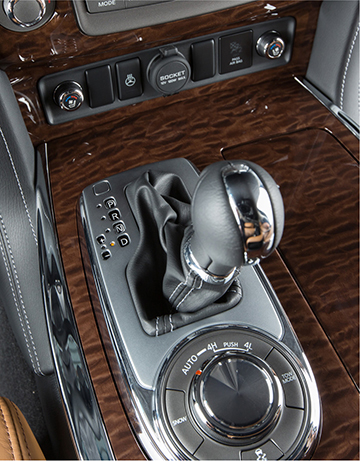
WHEN DOES IT NOT ENGAGE?
The IDLE NEUTRAL CONTROL is terminated or prohibited when the TCM and ECM detect that the vehicle is in one of the following conditions:
- Engine coolant and A/T fluid temperatures are below or above a prescribed temperature.
- A/T malfunction occurs.
- DTC is detected.
- Fail-safe mode activates.
- When the steering wheel is operated.
When idle speed increases due to heavy electric load, such as when the following are ON:
- Rear window defogger switch
- A/C switch
- Headlamp
- Fog lamp
